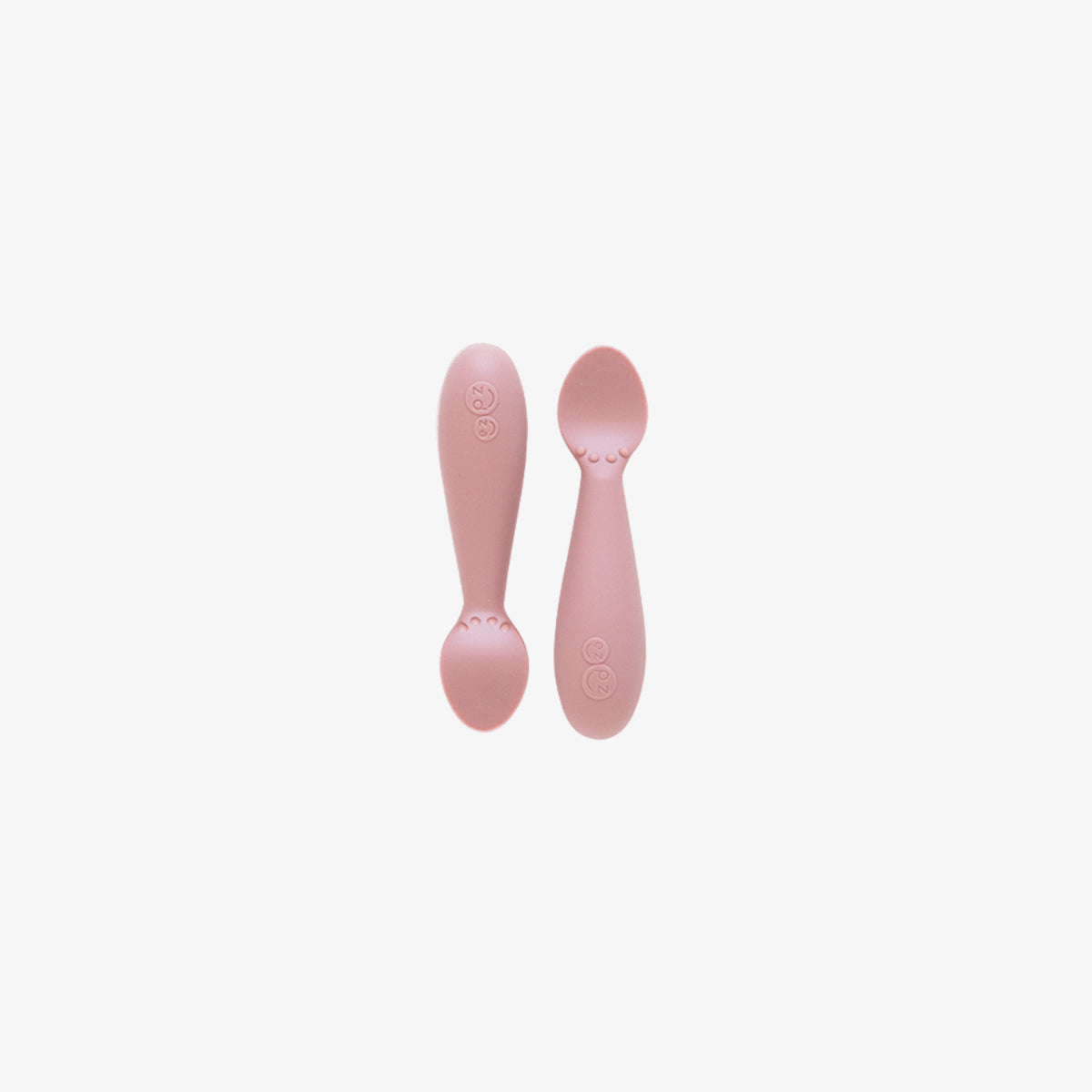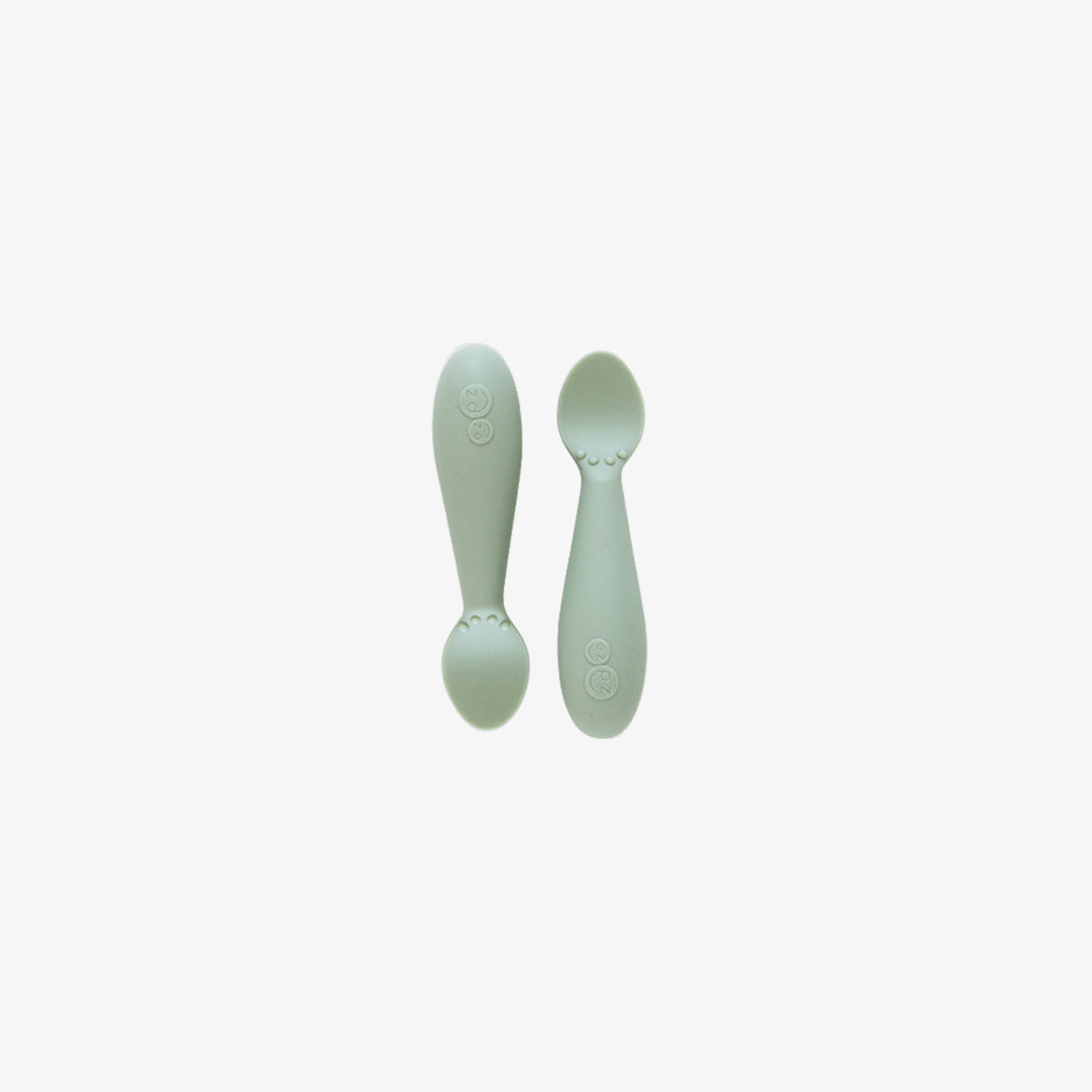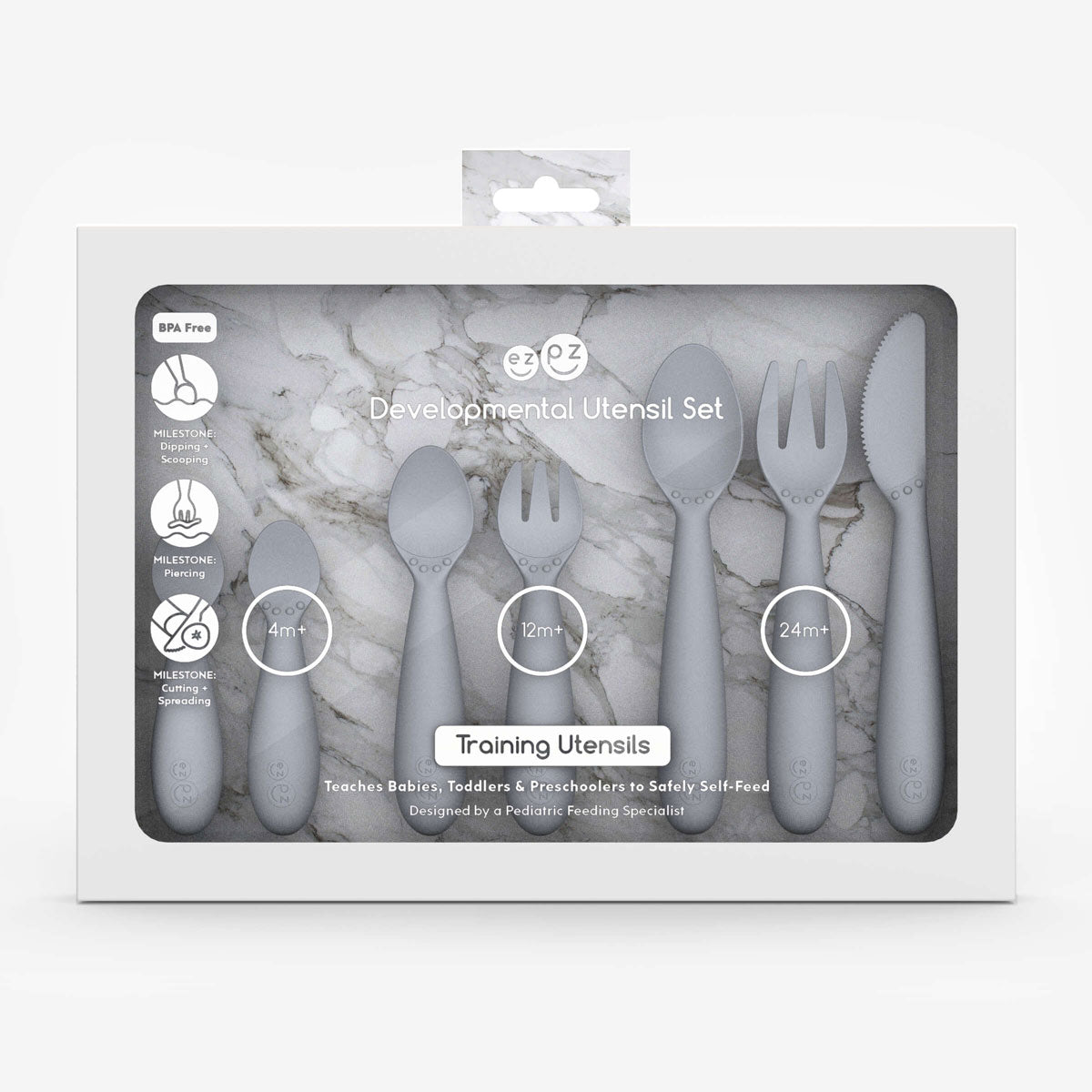When it comes to introducing solids to baby, I get a lot of questions about gagging. Parents are concerned about their baby gagging when introducing a spoon, especially since a gagging episode can lead to future food refusal. Here are six ways to decrease gagging when spoon feeding your baby.
Self-Feeding: A gag reflex is a response that prevents us from choking. When babies are first learning to eat, this reflex is new and hypersensitive. If we are in control while spoon feeding baby, we can unintentionally push the spoon in too far, too hard or too high resulting in gagging. So, I encourage parents to offer baby a spoon that is a self-feeding spoon rather than a spoon that is designed for parents to feed their baby. This type of feeding encourages baby to have more sensory awareness (since they are controlling the spoon) and results in less gagging episodes.
Spoon Size: Make sure the spoon you are using is properly sized for baby’s tiny mouth. Most spoons geared for babies are too big, causing gagging and choking episodes. When your baby sticks out their tongue, place the spoon close and see if you can observe tongue tissue on BOTH sides of the spoon. If not, the spoon is too big. Our Tiny Spoon is made for tiny tongues, and it’s the perfect self-feeding spoon for baby!
Slow Down: The rate and speed that we offer foods can either decrease or increase gagging. If baby starts to gag, slow down. Dip the spoon into the puree and hand it to baby. Let baby take the spoon, feed himself and swallow when ready. Encourage baby to pause and learn about the food (and the spoon) in between bites. Be sure to give baby enough time to swallow all the tastes lingering in the mouth before offering more food from the bowl.
Small Bites: If you are preloading the spoon (dipping the spoon into food and handing the spoon to baby to put in their own mouth) don’t overfill the spoon. Give baby tiny bites from a tiny spoon. Having baby learn about new tastes and textures in tiny increments of food will decrease their tongue-thrust reflex. This decreases gagging and makes baby more comfortable at mealtime. It will make you feel more confident too!
Smash: There is a misconception that babies without teeth gag more when starting solids than babies with teeth. This not true. Babies do not need teeth to eat because we are offering soft, safe, manageable textures that baby can easily smash with their gums. This is called a ‘munch chew’. Baby will munch a spear of banana or a spoon-filled puree with the jaw going up and down in a smashing / munching motion. This is developmentally appropriate and is the skill needed before baby learns how to do a ‘rotary chew’ when they have teeth.
Signs: Look for signs of fullness such as turning their head, pulling away, closing their mouth tightly, expressing disinterest, pushing the spoon away, stopping you from putting more food on their plate or even handing food back to you. Pay attention to these signs and allow baby to control how much they explore and eventually eat. Continue to offer a variety of foods, tastes and textures and allow your baby to make the decision about how much they will consume. This will strengthen the feeding relationship you have with your baby as well as decrease gagging!
What other tips do you have to decrease gagging when spoon-feeding? Have you used our Tiny Spoon? If so, tag us in your pics with the hashtags #ezpzfun #tinyspoon.









